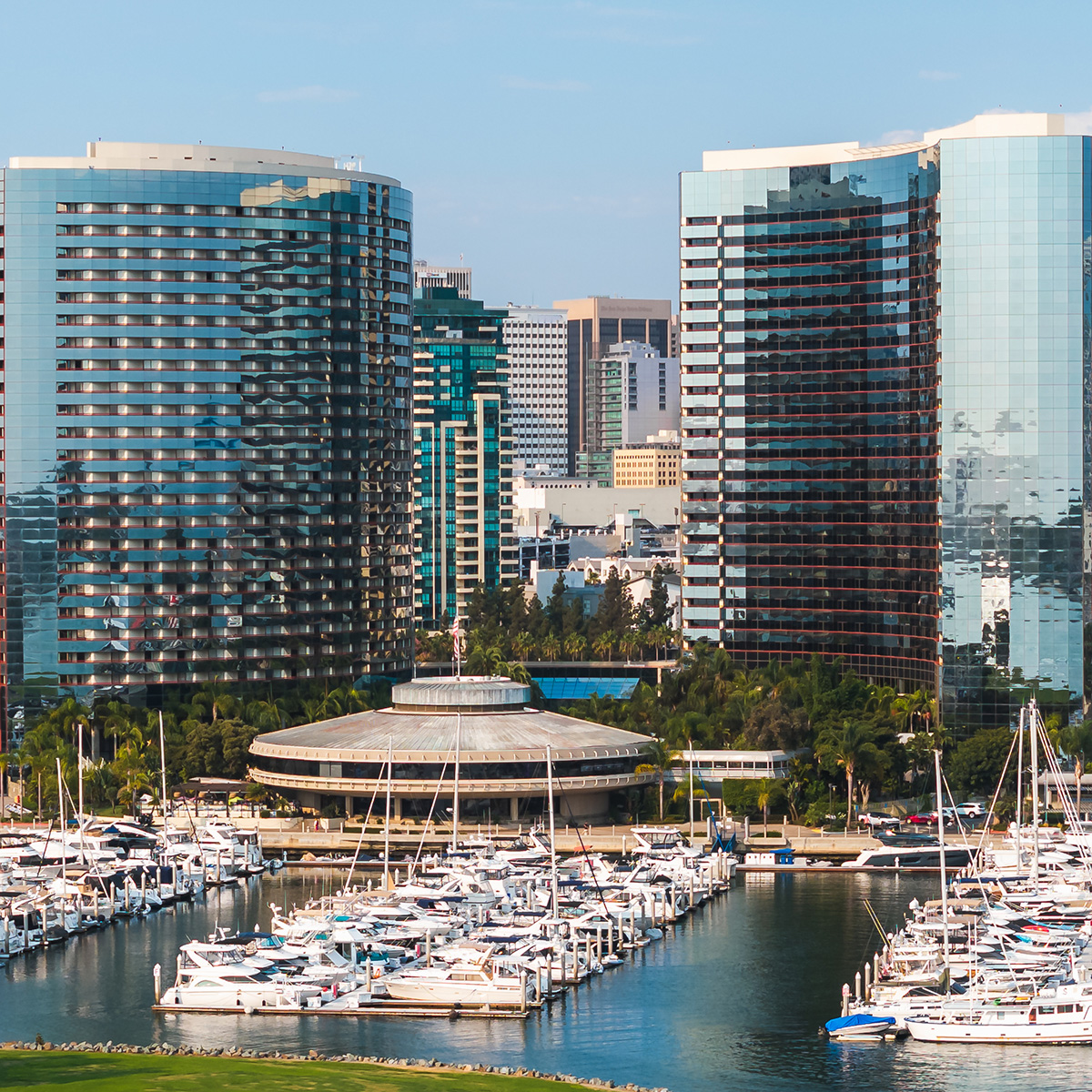Navigating Insurance for High-Rise and Mixed-Use Buildings: A Comprehensive Guide by Sax Insurance
High-rise and mixed-use buildings are the epitome of modern urban development, seamlessly blending residential, commercial, and retail spaces into vibrant, multifaceted communities. These dynamic environments foster convenience and connectivity but also introduce a complex insurance landscape. A single incident—whether a fire, water leak, or structural issue—can ripple across dozens of residential units, retail stores, and office spaces, disrupting lives and business operations. At Sax Insurance, we understand the unique challenges these properties face and are committed to providing tailored insurance solutions to protect property owners, managers, and tenants. In this comprehensive guide, we’ll explore the distinct risks associated with high-rise and mixed-use buildings, outline essential insurance policies, and share best practices for effective risk management.
Understanding the Unique Risks of High-Rise and Mixed-Use Buildings
The multifaceted nature of high-rise and mixed-use buildings creates a unique risk profile that demands specialized insurance strategies. Unlike single-purpose properties, these buildings house diverse occupants with varying needs, resulting in complex liability and property exposures. Below, we break down the key risks associated with these structures:
1. Multiple Occupancies and Diverse Exposures
Mixed-use buildings combine residential units, such as apartments or condominiums, with commercial spaces like offices, restaurants, or retail stores. Each occupant type introduces distinct risks:
- Residential Risks: Tenants or homeowners may face property damage from events like water leaks, electrical fires, or vandalism. Personal liability claims, such as slip-and-fall incidents in shared spaces, are also common.
- Commercial Risks: Businesses face risks tied to customer interactions, employee safety, and specialized equipment. For example, a restaurant may deal with kitchen fires, while a retail store might face theft or product liability issues.
- Shared Spaces: Common areas like lobbies, elevators, and parking garages are potential hotspots for accidents, increasing the likelihood of third-party liability claims.
The interplay of these occupancies creates a web of exposures that requires comprehensive coverage to address all potential scenarios.
2. Structural and Environmental Challenges
High-rise buildings, by their very design, face amplified risks due to their height and complexity:
- Wind and Weather Exposure: Taller structures are more susceptible to wind damage, especially in regions prone to storms or hurricanes. Windows, roofing, and exterior cladding can be particularly vulnerable.
- Fire Hazards: Fires in high-rise buildings can spread rapidly, especially if fire suppression systems are outdated or inadequate. Evacuation challenges in taller structures further elevate the risk to occupants.
- Elevator and Mechanical Failures: Elevators, HVAC systems, and electrical infrastructure are critical to high-rise functionality. Malfunctions or breakdowns can lead to costly repairs, safety hazards, and business interruptions.
3. Regulatory and Compliance Complexities
Mixed-use buildings must adhere to a patchwork of building codes and regulations tailored to both residential and commercial uses. For example:
- Residential areas must comply with housing codes, including fire safety, accessibility, and habitability standards.
- Commercial spaces face stricter regulations related to occupancy limits, fire egress, and hazardous material storage.
- Shared systems, such as plumbing or electrical grids, must meet the highest applicable standards, increasing construction and maintenance costs.
Failure to comply with these regulations can result in fines, legal disputes, or uninsurable losses, making it critical to work with insurance advisors who understand these nuances.
Essential Insurance Policies for High-Rise and Mixed-Use Buildings
To mitigate the risks outlined above, property owners and managers of high-rise and mixed-use buildings need a robust insurance portfolio. At Sax Insurance, we recommend the following policies to ensure comprehensive protection:
1. Commercial Property Insurance
What it covers: This policy protects the physical structure of the building, including walls, roofs, and shared systems like plumbing, electrical, and HVAC infrastructure. It covers losses from perils such as fire, vandalism, and certain weather-related events.
Why it’s essential: A single fire or water leak can cause extensive damage across multiple floors and units, leading to significant repair costs. Commercial property insurance ensures the building’s core infrastructure is protected, safeguarding the investment of property owners.
2. General Liability Insurance
What it covers: This policy protects against third-party claims for bodily injury or property damage in communal areas, such as lobbies, stairwells, or parking garages. For example, it could cover medical expenses for a visitor injured in a slip-and-fall incident.
Why it’s essential: With high foot traffic in mixed-use buildings, liability claims are a constant risk. General liability insurance provides a critical safety net for property managers and owners.
3. Umbrella Insurance
What it covers: Umbrella insurance extends liability coverage beyond the limits of primary policies, offering protection against catastrophic claims that could otherwise exhaust standard coverage.
Why it’s essential: In a high-rise with hundreds of occupants, a major incident—such as a fire causing multiple injuries—could lead to multimillion-dollar claims. Umbrella insurance ensures financial stability in worst-case scenarios.
4. Equipment Breakdown Insurance
What it covers: This policy covers the repair or replacement of critical systems like elevators, HVAC units, and electrical panels in the event of mechanical or electrical failure.
Why it’s essential: High-rise buildings rely heavily on complex systems. A single elevator breakdown can disrupt tenant access, while a failed HVAC system can render commercial spaces unusable, leading to significant losses.
5. Tenant Improvements and Betterments Coverage
What it covers: This policy protects customized build-outs in leased commercial spaces, such as custom shelving, lighting, or specialized fixtures installed by tenants.
Why it’s essential: Commercial tenants often invest heavily in customizing their spaces. Without this coverage, they could face substantial out-of-pocket costs to repair or replace damaged improvements.
6. Business Income Insurance
What it covers: For commercial tenants, this policy provides financial support to cover lost income and ongoing expenses during closures caused by covered events, such as a fire or flood.
Why it’s essential: A closure, even temporary, can devastate businesses reliant on daily operations, such as restaurants or retail stores. Business income insurance helps tenants maintain cash flow and recover quickly.
Risk Management Best Practices for High-Rise and Mixed-Use Buildings
While insurance is critical, proactive risk management is equally important to minimize losses and ensure tenant safety and satisfaction. Sax Insurance recommends the following best practices:
1. Invest in Advanced Fire Suppression and Alarm Systems
- Install state-of-the-art sprinkler systems, smoke detectors, and fire alarms compliant with local codes.
- Conduct regular testing and maintenance to ensure systems are fully operational.
- Train staff and tenants on evacuation procedures to enhance safety during emergencies.
2. Conduct Routine Safety and Maintenance Checks
- Schedule regular inspections of elevators, HVAC systems, and electrical infrastructure to identify potential issues before they escalate.
- Maintain detailed records of maintenance activities to demonstrate compliance with insurance requirements and building codes.
- Address tenant-reported issues promptly to prevent small problems from becoming major claims.
3. Use High-Quality Building Materials and Contractors
- Partner with reputable contractors who adhere to industry standards and use durable, code-compliant materials.
- Prioritize fire-resistant materials and energy-efficient systems to reduce risks and enhance sustainability.
- Verify contractor insurance and licensing to avoid liability for substandard work.
4. Work with a Specialist Insurance Advisor
Navigating the insurance needs of a high-rise or mixed-use building requires expertise. A specialist advisor from Sax Insurance can:
- Conduct a thorough risk assessment to identify gaps in coverage.
- Customize insurance policies to address the unique needs of residential and commercial occupants.
- Provide ongoing support to update coverage as the building’s usage or regulations evolve.
Why Choose Sax Insurance?
At Sax Insurance, we specialize in crafting tailored insurance solutions for complex properties like high-rise and mixed-use buildings. Our team of experienced advisors understands the intricacies of these environments and works closely with property owners, managers, and tenants to ensure comprehensive protection. By combining robust insurance policies with proactive risk management strategies, we help our clients achieve long-term stability, tenant satisfaction, and peace of mind.
Conclusion
High-rise and mixed-use buildings are at the heart of modern urban living, offering unparalleled convenience and diversity. However, their complexity demands a strategic approach to insurance and risk management. By understanding the unique risks, securing essential insurance policies, and implementing best practices, property owners and managers can protect their investments and foster thriving communities. Partner with Sax Insurance today to navigate this complex landscape with confidence. Contact us or visit our insurance specialties to learn more about our specialized insurance solutions.


